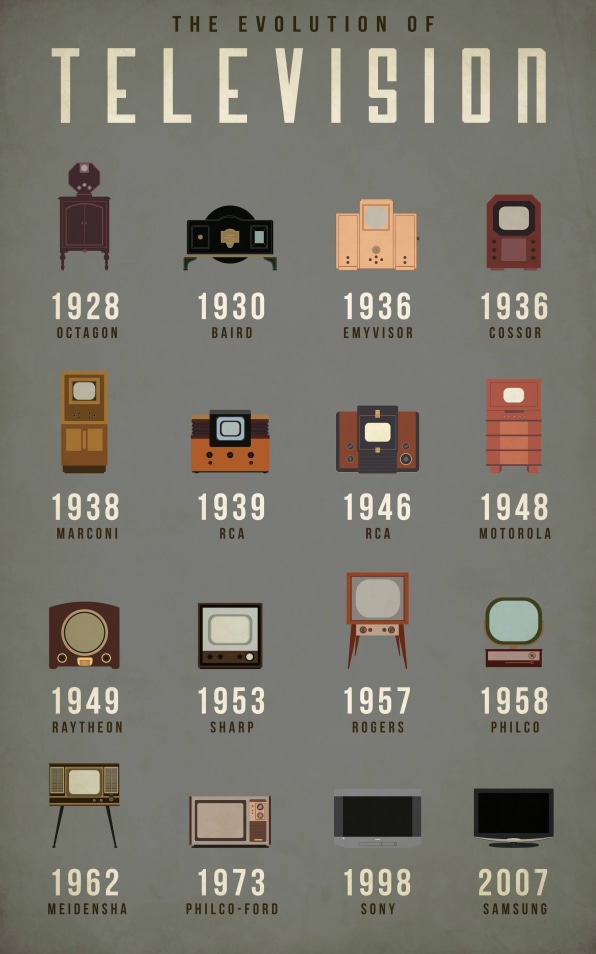The first invention that resembled a television was the Octagon by General Electric in 1928. It used mechanical rotating disk technology in order to display videos on its three-inch screen. It screened the world's first television drama, "The Queen's Messenger". As with all technology, the original televisions that were first commercialized for at home viewing was only afforded by the wealthy as a luxury item. At a time where the average salary was $1368 annually, a television set cost anywhere from $200 to $600. The 1936 Cossor Television was advertised to be incredibly more interesting than the radio, as if the radio was blind before television came along. This television came in a wooden cabinet, with cabinet doors covering the front, a design later scrapped, with round screens, and later, built in legs. In the early 1950's, consumer culture, with the drive of the Cold War, increased and flourished, allowing television technology to because an average household item, no less important than a kitchen table. By 1951, there were more than 12 million television sets in America alone. Over the decades, buttons replaced knobs and dials, screens got slimmer, and the colorful screens became black. By the early 2010's, over 95% of American homes had a television set in them. The average American viewer spends about five hours daily watching their screens.
The National Broadcasting Company (NBC) became the first broadcasting network to feature regular broadcasting in 1939. Initially, NBC only transmitted to about 400 television sets in the New York region. The WTCG by Ted Turner was the first basic cable network, launched in 1976. Demands for more channels grew, and so did cable subscriptions. Video stores began to appear in the 70s, set up to accommodate the VCR, which allowed you to watch tapes on demand and record television programs. Soon after, the DVD had overtaken the VHS. In 2010, the government shut down analog broadcasting, leading television broadcasters to go digital. This was made a law for safety reasons, but inevitable became an evolutionary turning point in the progression of television. Today, streaming and video on demand (VOD) replaced DVDs. Roku, Google, Apple, all allow costumers to easily stream movies and television programs to their devices. The biggest benefits to VOD are the convenience, the timing, and effectivity.


Great post Karen! I always knew televisions were expensive, but I didn’t quite realize the true extent when it was just breaking into the market. Your use of spit civic examples as well as statistics made the post superstrong and I overall loved it. While in your article you said in the early 2010‘s over 95% of American homes had a television today the number runs closer to 96.7%. Shockingly enough according to a consensus in 2017 about 37% of consumers in the US have Netflix. Therefore it’s super interesting to look at the decrease in TVs in the increase in Netflix and predict what the future will. Overall amazing post Karen
ReplyDeleteLove the post. I like how you provided information on how television grew, through the numbers. You should go further with this and look into how television is affecting other forms of media, and how it HAS affected other forms of media. Are books still prevalent, or are they like dust? If you should decide to do that I would love to hear your thoughts. Solid job.
ReplyDelete